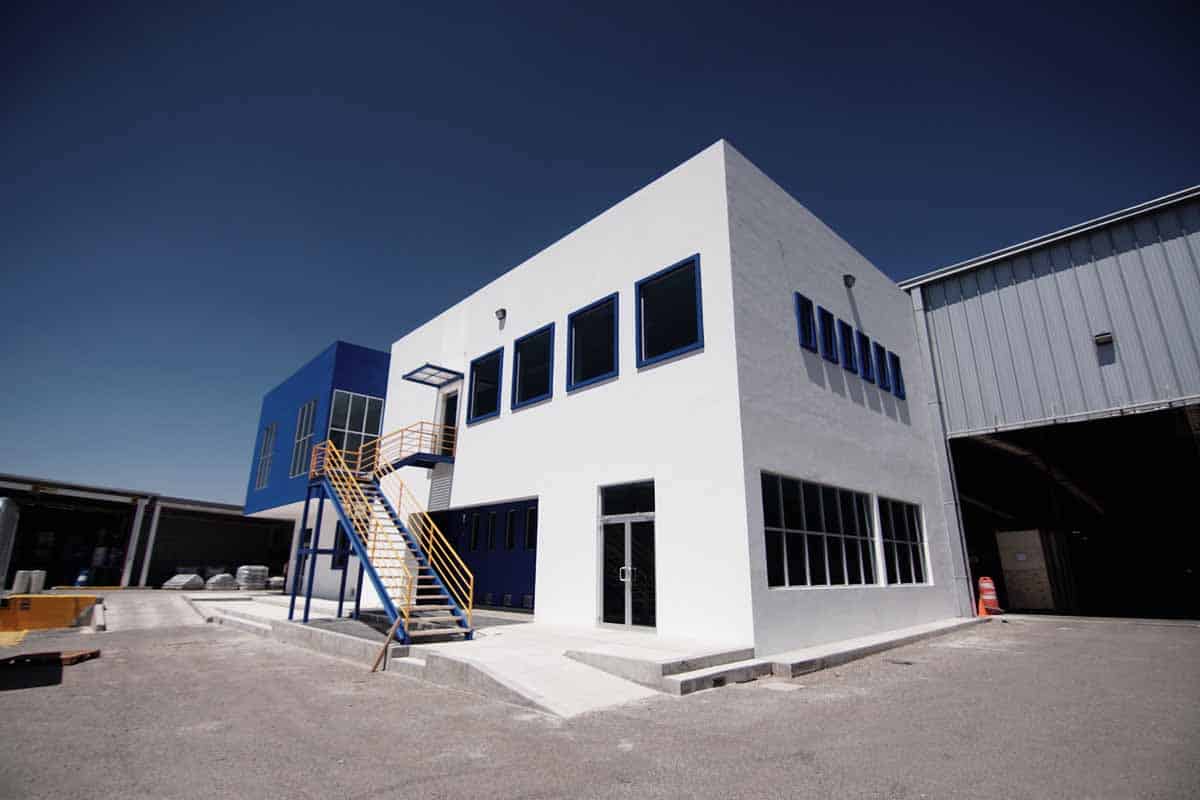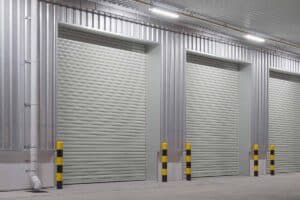Topics Covered:
Today, we’re tackling a topic that often goes overlooked until it causes headaches: compliance with building codes and regulations. Whether you’re opening a new facility or replacing an old commercial garage door, it’s crucial to make sure your installation meets all the legal and safety requirements. In fact, according to the International Code Council (ICC), nearly 30% of businesses end up needing modifications or additional inspections due to overlooked compliance issues.
Why Compliance Matters
You might be thinking, “Do I really need to worry about building codes for my garage door?” The answer is a resounding yes. These codes exist primarily to ensure public safety. They set minimum standards for structural integrity, fire safety, accessibility, and more. If you fail to comply, you could be putting your employees, customers, and property at risk. Beyond that, non-compliance can lead to penalties and liability issues that no business wants to face.
In our experience, a fully compliant garage door also tends to be more reliable. That’s because meeting code requirements often involves choosing durable materials, implementing proper installation techniques, and following safe operating guidelines. Essentially, compliance isn’t just about avoiding trouble with the authorities; it’s also about investing in a door system that performs well for years to come.
Common Regulations and Codes
While codes can vary significantly depending on your state or municipality, there are a few recurring themes we see in commercial garage door regulations. Let’s break them down:
- Fire Safety Requirements: Some jurisdictions require fire-rated doors in buildings where flammable materials are stored or where the door separates a garage from an occupied area. These doors can resist fire for a specified period, helping contain the spread of flames and smoke.
- Wind-Load Standards: If you operate in an area prone to high winds or hurricanes, you may need a garage door that meets specific wind-load ratings. These ratings indicate the door’s ability to withstand powerful gusts and prevent structural failure.
- Accessibility (ADA) Guidelines: In cases where the door provides public access or is part of a larger facility that must comply with the Americans with Disabilities Act (ADA), the installation must facilitate access for individuals with disabilities.
- Emergency Egress and Exits: Some doors must allow for quick, unobstructed exit in emergencies, which might involve panic hardware or other quick-release mechanisms.
- Electrical Codes: If your door includes an automatic opener, you’ll need to ensure the electrical work meets local codes and that the door has the correct type of circuits, wiring, and safety sensors.
Each of these areas serves a specific purpose, from protecting occupants during a fire to ensuring that those with mobility challenges can freely enter and exit the space. Understanding which of these apply to your situation is the first step toward a smooth installation process.
The Permit and Inspection Process
Navigating the permit and inspection process can be intimidating, but it doesn’t have to be. Typically, you’ll start by submitting a permit application to your local building department. This application may require plans or drawings of the proposed installation, along with details about the materials, wind-load ratings, and any fire-resistant features. Depending on your municipality, you might also need to provide engineering documents to prove the door can handle local environmental stresses, like heavy snow or high winds.
Once you submit your application, a building official will review it. They’ll either approve it, request additional information, or point out corrections that need to be made. After the door is installed, you’ll schedule a final inspection. The inspector will verify that the installation matches the approved plans and that all codes have been followed. If everything checks out, you’ll receive a certificate of occupancy or a final sign-off specific to the garage door project.
We often help our clients with the application and inspection processes because we know the ins and outs of local regulations. Having an experienced partner can save you time, reduce stress, and minimize the risk of costly do-overs.
Fire-Rated Doors and Why They Matter
Let’s take a moment to focus on fire-rated doors. If your commercial garage door is adjacent to a high-risk area—like a warehouse containing flammable chemicals or a busy workshop with lots of electrical equipment—local codes might require a door that can withstand fire for a set amount of time (e.g., 90 minutes). These doors feature specialized construction materials, seals, and closing mechanisms designed to block flames and smoke from traveling to other parts of the building.
Having a fire-rated door isn’t just about passing an inspection; it can be a critical life-saving feature. Fire can spread rapidly, and the right door can give occupants precious extra minutes to evacuate and for firefighters to respond. Insurance companies often look favorably on businesses with these safety measures in place, which might lead to lower premiums. So, while a fire-rated door may cost more than a standard model, it’s an investment that can pay off in multiple ways.
Wind-Load Requirements for Storm-Prone Areas
Businesses in hurricane zones or areas prone to high winds face another layer of regulation: wind-load requirements. These codes specify that your garage door must be able to withstand specific wind speeds without buckling or allowing significant air infiltration. For example, Florida’s building codes for hurricane-prone regions are among the strictest in the U.S., often requiring doors to handle wind speeds up to 140 mph or more, depending on the exact location.
Failing to meet these standards can be catastrophic. A compromised garage door during a storm can lead to interior pressurization, which may cause the roof or walls to fail. Investing in a wind-rated door is not only about code compliance; it’s also about protecting your business from severe storm damage. When we install these doors, we pay extra attention to structural reinforcements, such as stronger tracks, heavier gauge steel, and additional bracing.
ADA Compliance and Accessibility
If your commercial garage door is part of a property that serves the public—like an auto shop with a waiting area or a retail space with a loading dock—ADA compliance might come into play. While the ADA primarily focuses on accessibility inside buildings, certain factors like door width, threshold height, and ease of operation can be relevant if the door is used as an entrance or exit by customers.
For instance, if an employee or customer with mobility challenges needs to access an area behind the garage door, you may need to ensure the door’s controls are mounted at a height accessible from a wheelchair. Although ADA compliance can feel like a complex maze, it boils down to making your space usable for everyone. We can guide you through these requirements to ensure your door meets or exceeds accessibility standards.
Electrical and Safety Sensor Standards
In nearly all commercial settings, the garage door will be powered by an automatic opener. Building codes often have strict regulations on how this opener must be installed. You’ll need a dedicated circuit, proper grounding, and wiring that meets local electrical codes. Additionally, most codes require sensors that detect obstacles in the door’s path, reversing the door if something—or someone—is detected beneath it.
We also see more and more localities adopting rules that require a manual release mechanism, enabling you to open the door if there’s a power outage. Having this backup isn’t just about code compliance; it’s about maintaining operational flow during emergencies. These sensors and safety features can literally save lives by preventing the door from closing on a person or object.
Ensuring Structural Support
A commercial garage door isn’t just about the door itself; it’s also about how well it’s supported. If the opening in your building doesn’t have adequate framing or if the walls are compromised, you might fail an inspection. We sometimes work with clients who need to reinforce their walls or add additional support beams before the garage door can be safely installed.
While this might sound like extra work, it’s vital for the longevity and safety of the door. A well-supported door is less likely to warp or become misaligned over time. It also reduces the risk of serious structural failures, which can be far more expensive to fix than installing proper supports from the get-go.
Tips for a Smooth Compliance Journey
If this all sounds complex, don’t worry. Here are some practical tips to help you navigate the compliance process efficiently:
- Do Your Homework: Start by researching local regulations or reach out to a professional who can do it for you.
- Consult Early: Involve a garage door specialist at the planning stage. Early input can help you avoid redesigns or permit delays.
- Keep Thorough Records: Maintain copies of all permits, plans, and inspection reports in one place for easy reference.
- Budget Accordingly: Compliance measures like wind-rated doors or fire-rated materials may increase costs, so plan your budget with these in mind.
- Schedule Inspections Properly: Try to arrange inspections at a time that won’t disrupt your business operations too much.
Following these guidelines can help you sidestep last-minute hiccups and costly mistakes. Plus, you’ll develop a good relationship with local building officials if you demonstrate a proactive approach to meeting codes.
Working with Professional Installers
We can’t stress enough how much easier this process becomes when you have seasoned professionals in your corner. At RJ Garage Door Services, we keep ourselves updated on the latest code changes and region-specific requirements, whether it’s hurricane resistance in coastal areas or fire safety in industrial zones. We’ll handle the paperwork, coordinate with building inspectors, and ensure that every bolt, spring, and cable is installed correctly and safely.
During our initial consultation, we’ll talk through your specific needs, budget, and location. We’ll then present you with door options that are not only code-compliant but also aligned with your operational goals. From there, we manage the end-to-end process—submitting plans, scheduling inspections, and making any adjustments needed to secure that final sign-off.
Long-Term Compliance and Maintenance
Even after you’ve passed the initial inspection, it’s important to stay compliant over the long haul. Many codes require periodic inspections or re-certifications, especially for fire-rated doors. Regular maintenance is also key. If your door’s fire seal gets damaged or if its wind-load braces become loose, you might be in violation of local regulations without even realizing it.
We recommend scheduling routine maintenance checks at least once or twice a year. During these visits, we’ll look for any signs of wear or changes that could compromise your door’s compliance status. By catching issues early, you’ll avoid fines and keep your facility as safe as possible.
Final Thoughts
Ensuring your commercial garage door is up to code might feel daunting, but it’s a crucial step in safeguarding your business, your employees, and your customers. From fire-rated doors that offer critical protection to wind-load specifications that shield you from natural disasters, compliance covers a wide range of considerations. However, the payoff is worth it—a well-installed, code-compliant door will serve you for years with minimal hassle.
Here at RJ Garage Door Services, we’re dedicated to making this process as smooth as possible. We bring our expertise to the table to help you choose the right type of door, navigate permits, handle inspections, and maintain compliance down the road. If you have any questions or concerns about building codes in your area, feel free to reach out. We’d be happy to provide personalized guidance based on your location and industry requirements.




